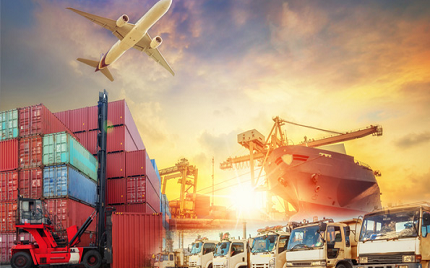With about 50 different ingredients, Domino’s Pizza has a complex source of raw materials. As per Domino’s a possible 34mn combinations have been worked out by them. Certainly, you would not want to have them all in your menu, but the number adequately testifies the choices in front of you at domino’s. This is possibly the most customizable food outlet in the world. Yet, for all this variety, Domino’s supply chain is based on a push concept for most of its operations. It is based on the familiar
concept of delaying the customization till the last possible stage to maximize automation and production. Let’s look into the Push-Pull Frontier with this illustration of Domino’s Pizza.
The ingredients used at Domino’s are come from a singular source. Surprisingly, even the dough is prepared at one of its Supply Chain centres, while most of the other ingredients are purchased centrally and stored, in cold storage facilities. Trucks with refrigeration facility are used to then transport these items to the various stores. Vegetables such as cabbage and lettuce, are cut and stored and are retrieved whenever the order comes from the outlets. The dough is transported in calculated portions. Unique options such as the thin crust bread, come pre-prepared. Domino’s also has separate space and a dedicated location for every ingredient and even has separate equipment to take care of veg and non-veg variants and the gluten-free variants. Up to this point, the Supply Chain of Domino’s is very traditional and focusses on pushing its products to the stores. But from this point, Domino’s is most ingenious with its variations. There are 4 variants in the bread, 5 different sauces with 4 different customization each, nearly 10 different toppings and a number of variations with the cheese as well.
Suddenly, the push becomes pull, as a customer is bombarded with the options in front of him/her. It is fair to assume that Pizzas are plenty customizable. But the amount of effort spent behind the stores to make these options available to the customer at his doorstep within 30 minutes is stupendous. This thin line, separating the customers’ choices and the standardization in the operations at the Domino’s Pizza Outlet, is the classic case of Push-Pull Frontier. Domino’s has really done well to provide so much customization, and yet, Push its product towards the customer, almost up to the point where it receives the order from the customer. Push-Pull frontier is the point where the options open up for the customer. It is a complex system where the traditional push and pull concepts can co-exist. Either concept has both pros and cons. Push offers economies of scale as well as a high production rate; pull helps satisfy the customer with the customized options while also reducing inventory and costs. The Push-Pull strategy can offer the advantage of both these concepts, provided, the Frontier is clearly distinguished in the Supply Chain. The distinguisher for Domino’s in the Pizza store business has been the ability to consistently ensure a 30 minutes delivery across countries and regions. Even as they are striving to provide more and more innovative options for the customer, the bottom line is to ensure pizzas reach the consumers on time. This is only possible on the back of the enormous flexibility in their Supply Chain. Domino’s ensures that delivery is not achieved at the cost of the wide array of customization. Domino’s does not take hours to prepare the bread because the dough is ready along with the base sizes; they do not have to cut the veggies or the cheese because they have been prepared before-hand to the required quantity; the cook need not wait till the oven is free because Domino’s has a conveyor converted into an oven.
Domino’s has the knowledge on exactly what its customers will ask on a particular day at a particular store, thanks to the robust forecasting tools in place. They have the supplies and ingredients ready, which only required to be spread over the bread as per the customer’s order and baked before being packed and delivered. Customization is usually time consuming- the reason for higher cost and greater demand for customized products. Domino’s has identified the solution for that very issue, converting this into an advantage. With a Vertically Integrated Supply Chain and a completely localised sourcing in most markets, Domino’s has a very reliable Supply Chain. They also use a committed fleet to move their supplies. There is very little deviation in the sourcing process which allows greater flexibility in the processes down the line. This has been possible, only because they have clearly identified the Frontier- the point where orders are received from the customer, and worked on standardising all the stages before the Push-Pull Frontier. Domino’s sells over 1.5mn pizza every day; but they are prepared exactly the same way at the 16000 stores spread across the globe.










